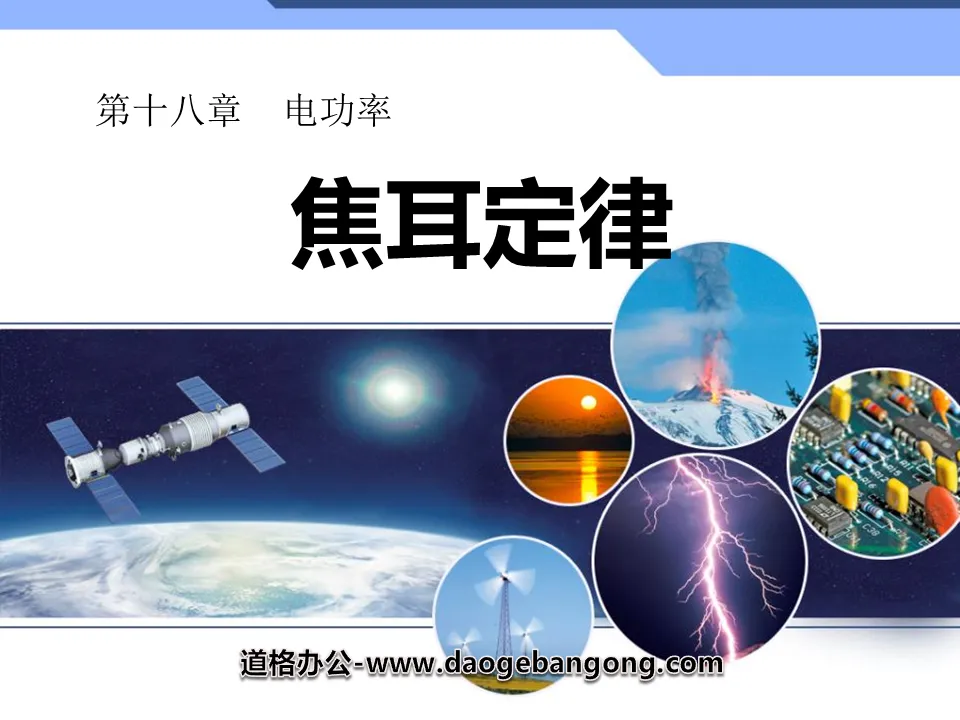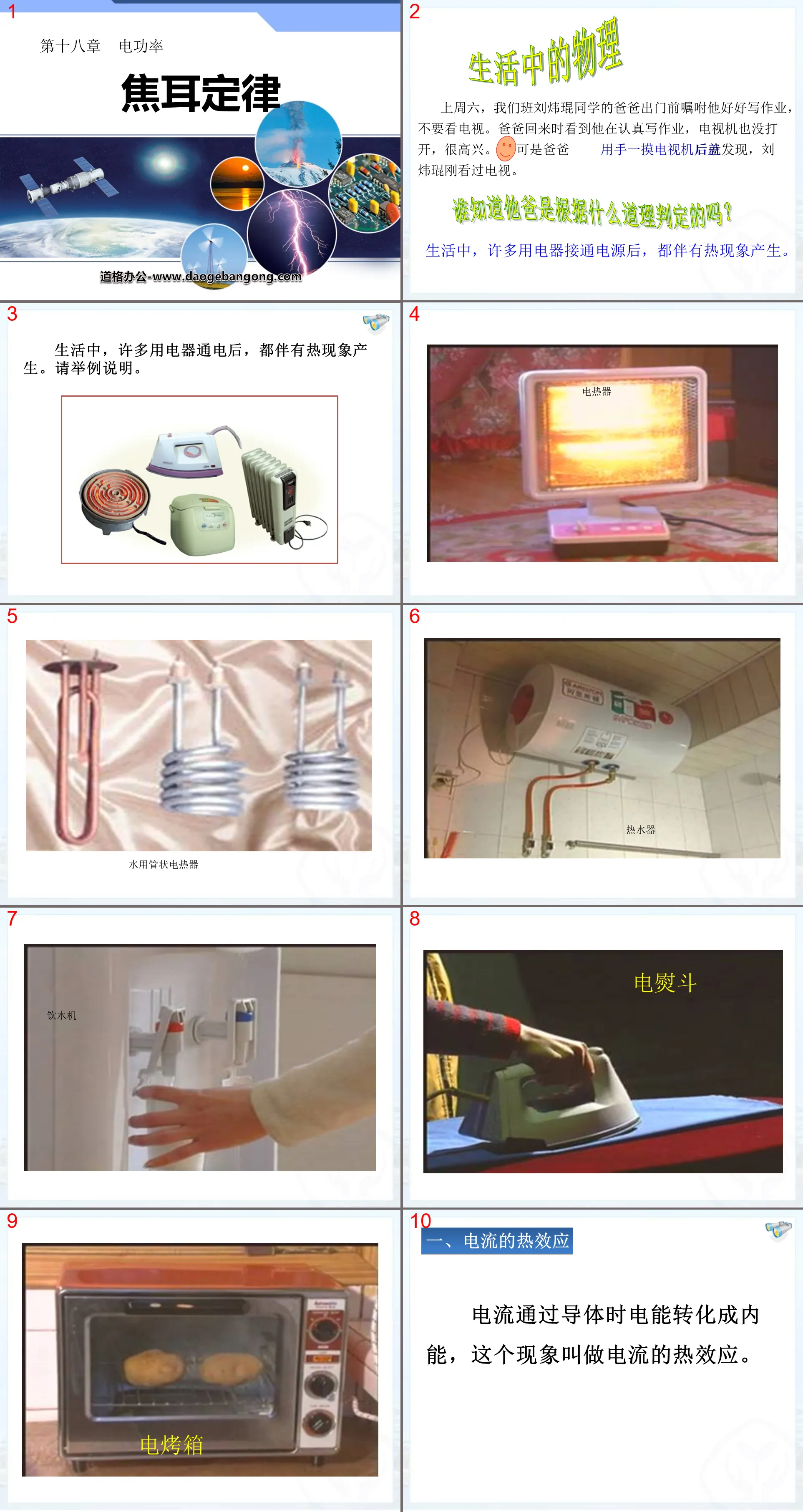People's Education Edition Physics for Grade 8, Volume 2
People's Education Edition Ninth Grade Physics Complete Book
Shanghai Science Edition Ninth Grade Physics
People's Education Edition Physics for Grade 8, Volume 1
Shanghai Science Edition 8th Grade Physics
Beijing Normal University eighth grade physics volume one
Lu Jiao Edition Ninth Grade Physics Volume 1
Beijing Normal University Ninth Grade Physics Volume 1
Lu Jiao Edition Ninth Grade Physics Volume 2
Lu Ke Edition High School Physics Compulsory Course One
Guangdong and Shanghai Edition Ninth Grade Physics Volume 1
People's Education Press High School Physics Compulsory Course II
Guangdong and Shanghai version of eighth grade physics volume 2
Beijing Normal University Ninth Grade Physics Volume 2
Lu Jiao Edition Eighth Grade Physics Volume 2
Guangdong and Shanghai Edition Ninth Grade Physics Volume 2

| Category | Format | Size |
|---|---|---|
| People's Education Edition Ninth Grade Physics Complete Book | pptx | 6 MB |
Description
"Joule's Law" Electric Power PPT Courseware 3
1. Thermal effect of electric current
When electric current passes through a conductor, electrical energy is converted into internal energy. This phenomenon is called the heating effect of electric current.
Want to discuss
The electric stove wire and the wire pass the same current. Why does the electric stove wire glow red when hot, but the wire barely heats up?
What factors determine the amount of heat generated when electric current passes through a conductor?
Experiment 1: Study the relationship between electric heating and resistance
When the current is the same and the power-on time is the same, the greater the resistance, the more heat the resistance generates.
Experiment 2: Study the relationship between electric heat and electric current
When the resistance is the same and the power-on time is the same, the greater the current passing through a resistor, the more heat the resistor generates.
James Prescott Joule (1818-1889), British physicist. He spent nearly 40 years conducting more than 400 experiments to study the relationship between heat and work. Through extensive experiments, the relationship between the heat generated by an electric current and the current, resistance, and energization time was first accurately determined in 1840.
2. Joule’s Law
1. Content: The heat generated by current passing through a conductor is proportional to the square of the current, proportional to the resistance of the conductor, and proportional to the energization time.
2. Formula: Q = I2Rt
3. Unit: Joule (J)
3. The relationship between electric energy and electric heat
1. When a current passes through a conductor, if all the electrical energy is converted into internal energy without being converted into other forms of energy at the same time, then the heat Q generated by the current is equal to the consumed electrical energy W, that is
Q = W = UIt = I2Rt
Such as: electric heater, rice cooker, electric stove, etc.
2. When the fan works, the electrical energy consumed is mainly converted into the mechanical energy of the motor:
Electric energy ---- internal energy + mechanical energy
W>Q fever
Want to discuss
For light bulbs with the same rated voltage, the greater the rated power and the smaller the resistance, the more heat is generated per unit time during normal operation. However, according to Joule's law, the greater the resistance, the more heat is generated per unit time. There seems to be a contradiction between the two. What's going on?
Answer: The former says that the smaller the resistance, the more heat is generated per unit time during normal operation, and the prerequisite is that the voltage is the same; while the latter says that the larger the resistance, the more heat is generated per unit time, and the prerequisite is that the current is the same. is not contradictory. So we should pay special attention to the conditions when applying the formula.
4. Utilization and prevention of electric heat
1. Utilization of electric heat
Advantages of electric heaters: clean and hygienic, no environmental pollution, high thermal efficiency, and can easily control and adjust the temperature.
2. Dangers of Electric Heat
In many cases, we do not want the temperature of electrical appliances to be too high. For example: the back cover of the TV has many holes for ventilation and heat dissipation; when the computer is running, a micro fan must be used to dissipate heat in time, etc.
electric motor
1. Energy conversion: electrical energy = mechanical energy + internal energy
2. Total work (electric energy): W total = Uit
3. Useful work (mechanical energy): W = Gh
4. Extra work (internal energy, heat): Q=I²Rt
Typical examples
1. There is a DC motor with a current of 35A when operating at a voltage of 220V. Use it to lift goods with a mass of 1400kg at a constant speed and lift it by 1m in 2s. Assume that all the energy output by the motor is used to lift the goods. ask:
1) How much work does the motor do on the goods within 2 seconds? 2) What is the efficiency of the motor during this period?
3) What forms of energy are the electrical energy consumed by the motor converted into?
2. After learning about electricity, Xiao Ming collaborated with his classmates to assemble an experimental device as shown in the picture. He wanted to use this experiment to measure the efficiency of a small motor in lifting heavy objects. When he closed the switch, he adjusted the experimental device so that the hook code rose by 0.6m at a constant speed within 10 seconds, and observed that the voltmeter and ammeter showed 3V and 0.2A respectively. It is known that the mass of the hook code is 50g. Find:
⑴The electric energy consumed by the motor within 10 seconds when the hook code rises at a constant speed.
⑵In the process of the hook code rising at a constant speed, what is the efficiency of the motor in lifting the hook code?
3. The electric motor as shown in the figure is a widely used power machine, from the perspective of energy conversion. It mainly converts electrical energy into mechanical energy, and part of the energy is lost in the form of heat in the coil. There is an existing motor. When 220V is applied to both ends of the motor, the current flowing through the motor coil is 50A. ask:
(1) How much power does the motor consume per minute?
(2) It is known that the heat generated when the current passes through the conductor Q = I2Rt (where I, R and t represent the current through the conductor, the resistance of the conductor and the energization time respectively). If the resistance of the motor coil is 0.4Ω, then the coil will How much heat is produced in minutes?
(3) How much mechanical work does this motor do per minute?
Keywords: Electric power teaching courseware, Joule's law teaching courseware, New People's Education Edition ninth-grade physics PPT courseware, ninth-grade physics slide courseware download, electric power PPT courseware download, Joule's law PPT courseware download, .ppt format
For more information about the "Electrical Power Joule's Law" PPT courseware, please click the Electric Power ppt Joule's Law ppt tag.
"Exploring Joule's Law" Electric Energy and Electric Power PPT Courseware 3:
"Exploring Joule's Law" Electric Energy and Electric Power PPT Courseware 3 1. Thermal Effect of Current: When electric current passes through a conductor, the conductor always generates heat. This phenomenon is called the thermal effect of electric current. 2. What factors are related to the thermal effect of current? Conjecture: 1. The heat of electric current...
"Exploring Joule's Law" Electric Energy and Electric Power PPT Courseware 2:
"Exploring Joule's Law" Electric Energy and Electric Power PPT Courseware 2 Learning Objectives: 1. Know the relationship between heat production, resistance and current of electrical appliances. 2. Be able to design experiments to verify the relationship between the heat generation of the resistor and current, voltage, and resistance, and be able to analyze the experimental data to obtain...
"Exploring Joule's Law" Electric Energy and Electric Power PPT Courseware:
"Exploring Joule's Law" Electric Energy and Electric Power PPT Courseware [Learning Objectives] 1. Know the thermal effect of electric current and its application and control in practice. 2. Through experiments, explore the factors related to the heat released by energized conductors. In the process of designing experiments, control variables are used..
File Info
Update Time: 2024-09-03
This template belongs to Physics courseware People's Education Edition Ninth Grade Physics Complete Book industry PPT template
"Joule's Law" Electric Power PPT Courseware 3 Simple campus recruitment activity planning plan summary enterprise and institution recruitment publicity lecture PPT template is a general PPT template for business post competition provided by the manuscript PPT, simple campus recruitment activity planning plan summary enterprise and institution recruitment promotion Lecture PPT template, you can edit and modify the text and pictures in the source file by downloading the source file. If you want more exquisite business PPT templates, you can come to grid resource. Doug resource PPT, massive PPT template slide material download, we only make high-quality PPT templates!
Tips: If you open the template and feel that it is not suitable for all your needs, you can search for related content "Joule's Law" Electric Power PPT Courseware 3 is enough.
How to use the Windows system template
Directly decompress the file and use it with office or wps
How to use the Mac system template
Directly decompress the file and use it Office or wps can be used
Related reading
For more detailed PPT-related tutorials and font tutorials, you can view: Click to see
How to create a high-quality technological sense PPT? 4 ways to share the bottom of the box
Notice
Do not download in WeChat, Zhihu, QQ, built-in browsers, please use mobile browsers to download! If you are a mobile phone user, please download it on your computer!
1. The manuscript PPT is only for study and reference, please delete it 24 hours after downloading.
2. If the resource involves your legitimate rights and interests, delete it immediately.
3. Contact information: service@daogebangong.com
"Joule's Law" Electric Power PPT Courseware 3, due to usage restrictions, it is only for personal study and reference use. For commercial use, please go to the relevant official website for authorization.
(Personal non-commercial use refers to the use of this font to complete the display of personal works, including but not limited to the design of personal papers, resumes, etc.)
Preview










